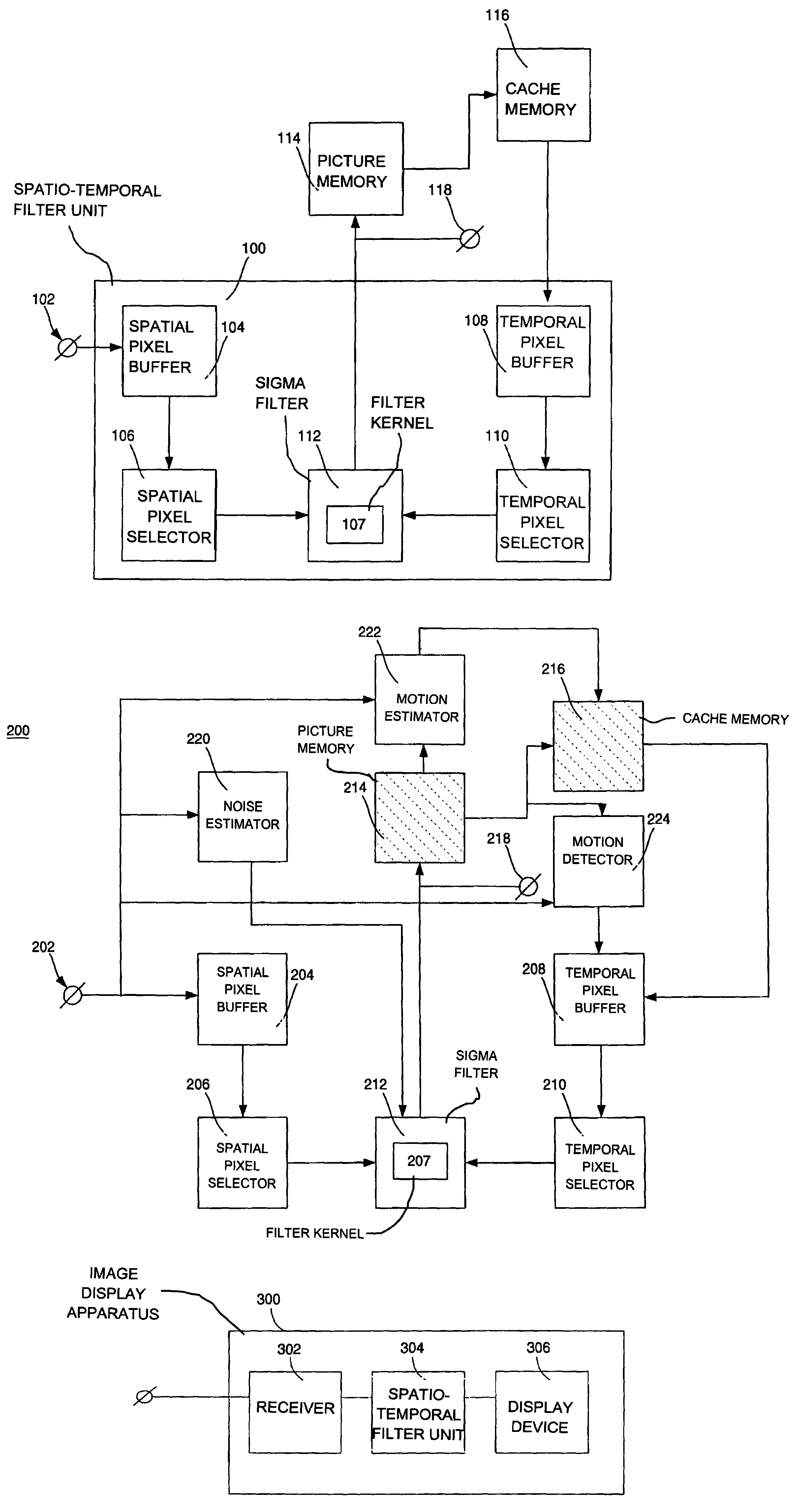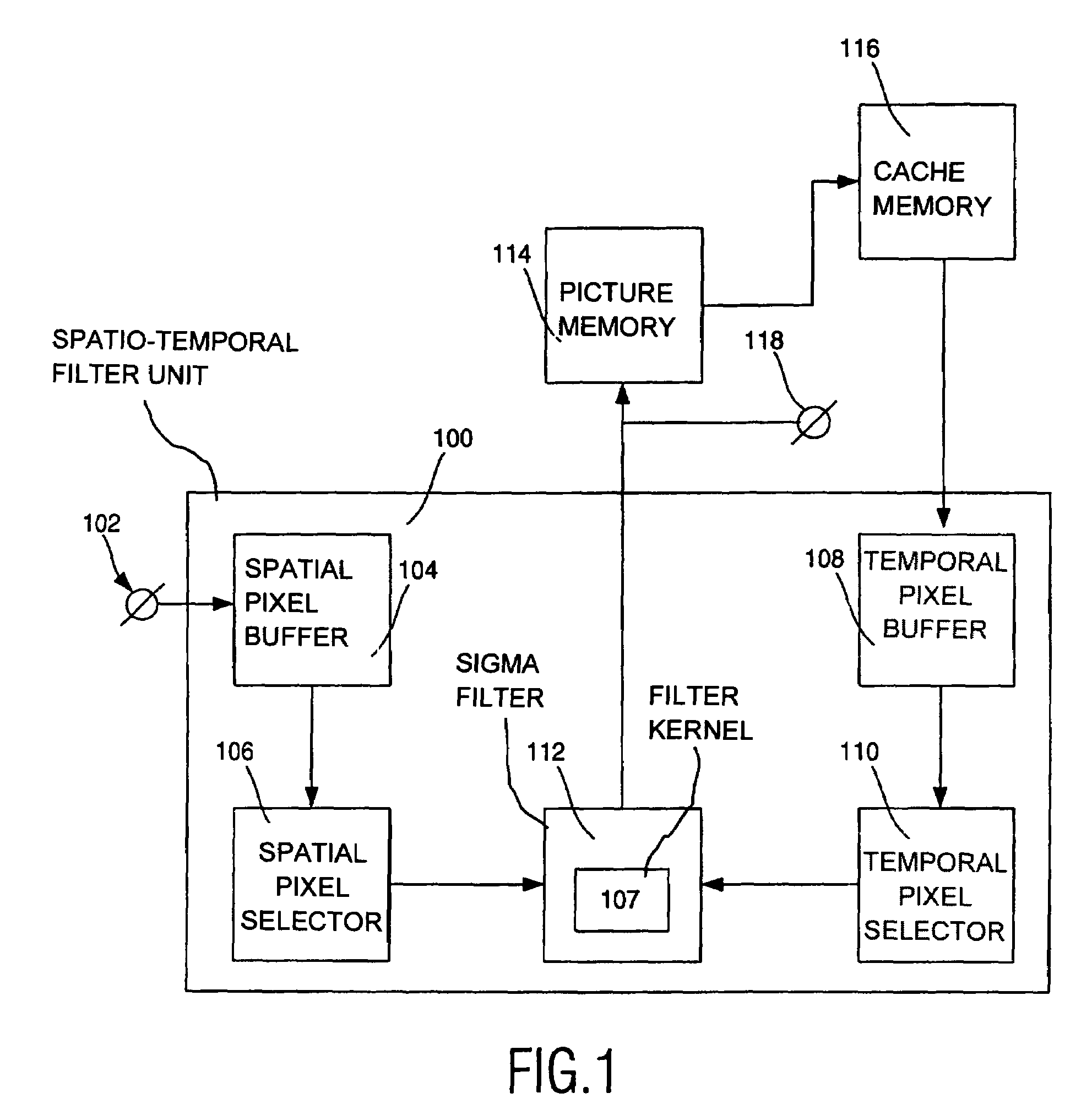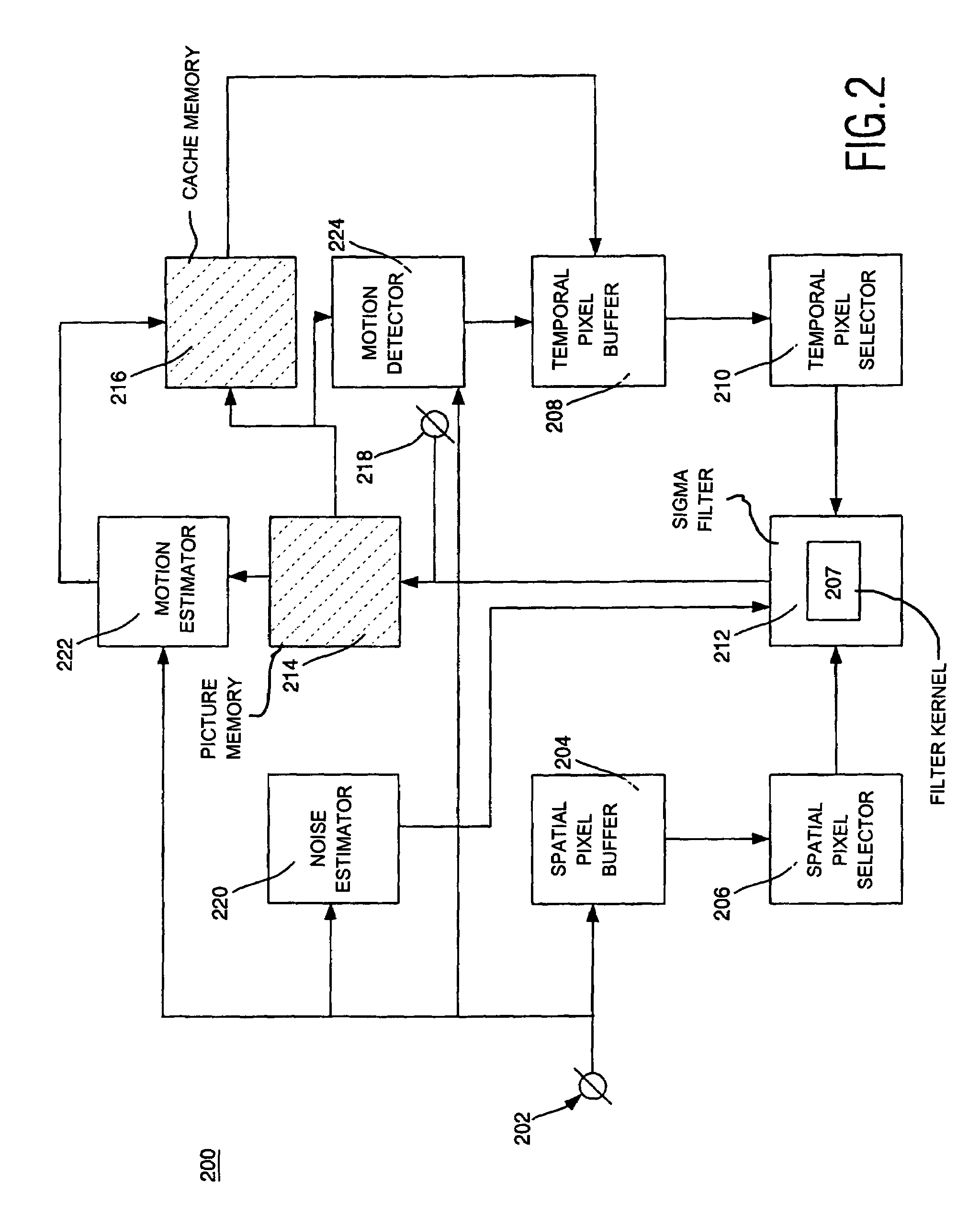Spatio-temporal filter unit and image display apparatus comprising such a spatio-temporal filter unit
a filter unit and spatiotemporal technology, applied in image enhancement, color signal processing circuits, instruments, etc., to achieve the effect of improving image quality, good results, and relatively low cost of processing pixels
- Summary
- Abstract
- Description
- Claims
- Application Information
AI Technical Summary
Benefits of technology
Problems solved by technology
Method used
Image
Examples
Embodiment Construction
[0029]FIG. 1 schematically shows an embodiment of a spatio-temporal filter unit 100 and two memory units which are used by the spatio-temporal filter unit 100. These memory units might be shared with other units in a system comprising the spatio-temporal filter unit 100. The first memory unit is a picture memory 114 for storing the output of the spatio-temporal filter unit, being a temporally recursive filtered image. The second memory unit is a cache 116. The signal representing the images enters the spatio-temporal filter unit 100 at the connection 102. The filtered signal leaves the spatio-temporal filter unit 100 at the connection 118. Pixels from this filtered signal are also stored in the picture memory 114. Pixels from an image that enter the spatio-temporal filter unit 100 are buffered in the spatial pixel buffer 104. The spatial pixel selector 106 selects pixels from the spatial pixel buffer 104 and provides these selected pixels to the filter kernel 107 of the sigma filter...
PUM
 Login to View More
Login to View More Abstract
Description
Claims
Application Information
 Login to View More
Login to View More - R&D
- Intellectual Property
- Life Sciences
- Materials
- Tech Scout
- Unparalleled Data Quality
- Higher Quality Content
- 60% Fewer Hallucinations
Browse by: Latest US Patents, China's latest patents, Technical Efficacy Thesaurus, Application Domain, Technology Topic, Popular Technical Reports.
© 2025 PatSnap. All rights reserved.Legal|Privacy policy|Modern Slavery Act Transparency Statement|Sitemap|About US| Contact US: help@patsnap.com



